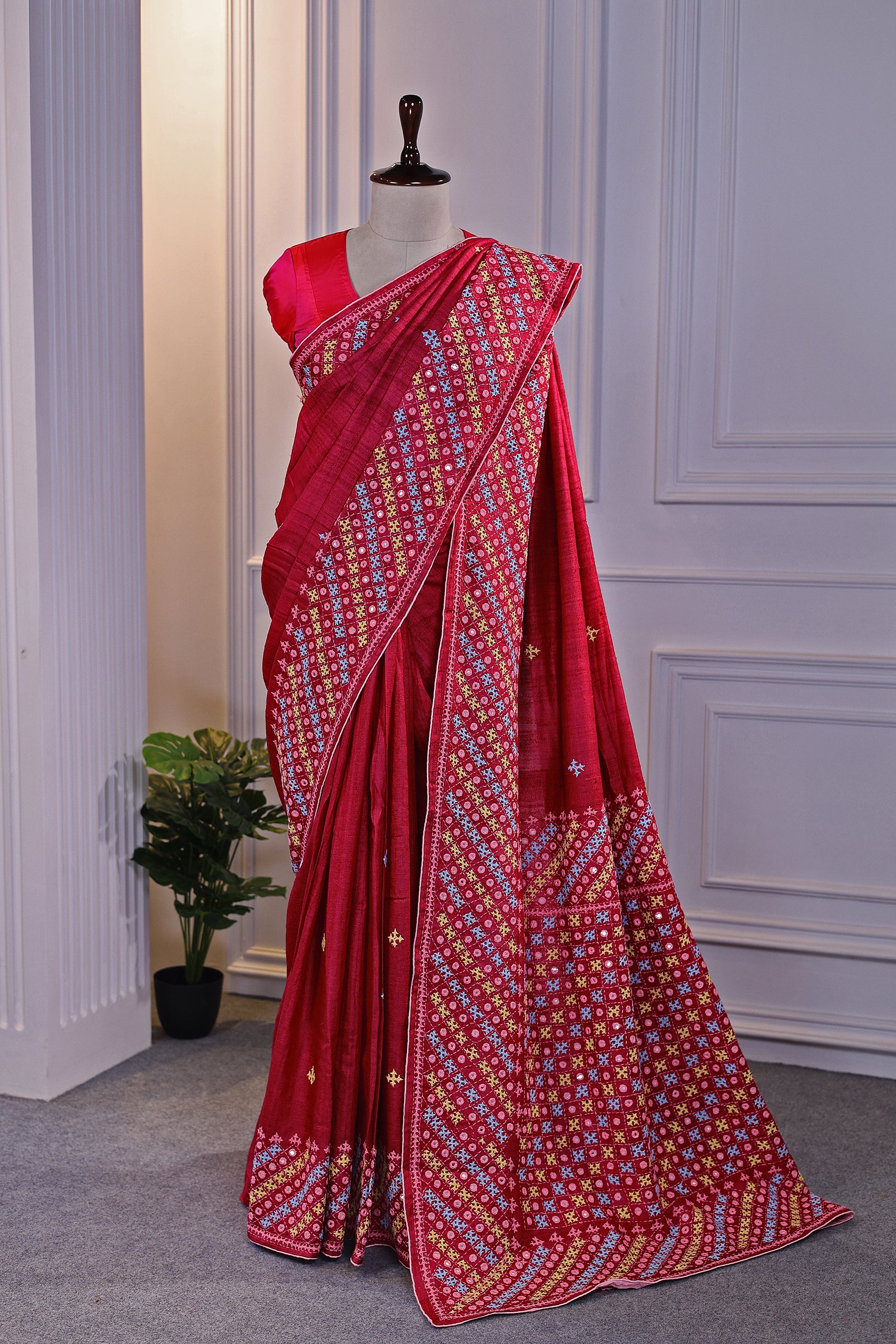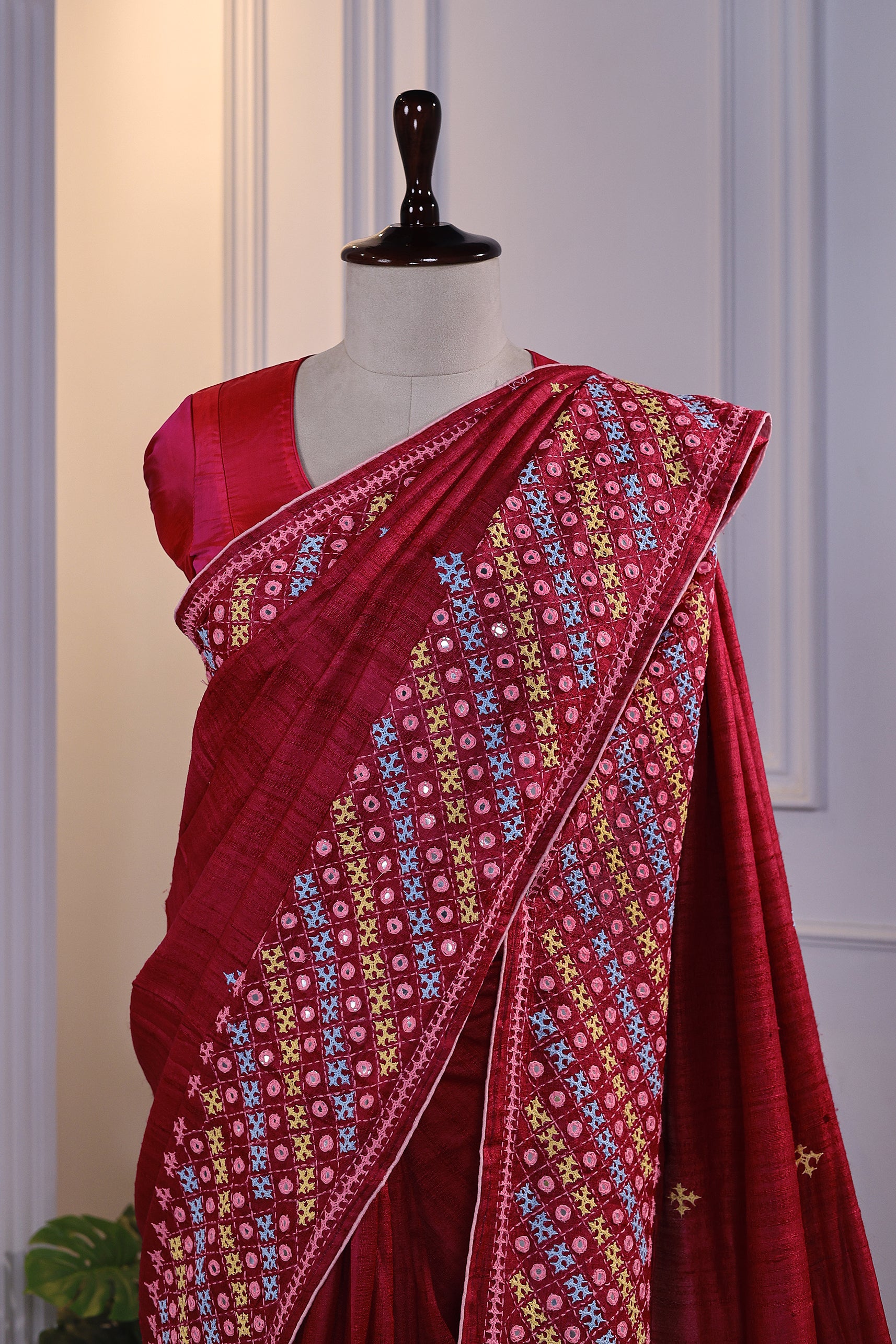A Tussar Handloom Gujarati Saree is a beautiful and traditional garment that reflects the cultural heritage and craftsmanship of Gujarat, combined with the luxurious appeal of Tussar silk. This saree is known for its rich texture, vibrant colors, and intricate handwoven designs, making it a timeless piece for special occasions.
Here’s a closer look at the various elements that define a Tussar Handloom Gujarati Saree:
1. Tussar Silk:
-
Tussar silk, also known as Kosa silk, is a type of wild silk produced by silkworms that feed on oak and other trees, giving the fabric a natural golden hue and a slightly coarse, textured finish.
-
Unlike mulberry silk, which has a smooth, glossy appearance, Tussar silk is softer, more breathable, and has a rich, natural finish. Its unique texture makes it ideal for traditional handloom sarees like those from Gujarat.
2. Gujarati Handloom:
-
Gujarati handloom sarees are famous for their vibrant colors, intricate patterns, and the use of traditional weaving techniques. The state of Gujarat has a long history of producing high-quality handwoven textiles, and the sarees often feature unique traditional motifs inspired by nature, culture, and regional art forms.
-
Handloom Gujarati sarees are made using techniques such as Patola weaving, Kutch embroidery, and Bandhani (tie-dye). Though the Tussar Gujarati saree may not always include all these techniques, it can feature elements like traditional borders, pallus (end of the saree) with embroidery, and geometric or floral motifs.
3. Designs and Motifs:
-
Tussar Handloom Gujarati sarees often feature traditional motifs such as paisleys, floral patterns, geometric shapes, and mughal-inspired elements.
-
The pallu (end piece of the saree) is often where the most intricate designs are placed, with handwoven patterns and sometimes embroidery in zari (metallic threads) that add a luxurious sheen to the fabric.
-
The borders of these sarees are usually wide and can feature a variety of patterns such as diamonds, florals, or tribal designs, often in contrasting colors to make them stand out.
4. Colors:
-
Tussar handloom Gujarati sarees come in a wide array of vibrant colors, such as deep reds, oranges, rich yellows, and royal blues, often complemented by gold or silver zari work.
-
The natural golden tone of Tussar silk itself adds warmth and a regal touch to the saree, making it a perfect backdrop for the bold and bright colors typically associated with Gujarati handloom textiles.
5. Occasions:
-
Tussar Handloom Gujarati sarees are ideal for festive occasions, weddings, cultural celebrations, and family gatherings. The luxurious yet understated nature of Tussar silk, combined with the intricate handwoven designs, makes these sarees suitable for both formal and semi-formal events.
-
They can also be worn for Navratri, Diwali, and other religious festivals, where Gujarati sarees are often a traditional choice due to their cultural significance.
6. Drape and Feel:
-
The drape of a Tussar Handloom Gujarati saree is soft yet structured due to the natural silk's slightly crisp texture. It holds its shape well while offering a graceful flow, making it both comfortable and elegant for the wearer.
-
The fabric’s natural breathability makes it ideal for wearing in warmer climates, allowing it to be worn for extended hours during festivals or celebrations without discomfort.
Conclusion:
A Tussar Handloom Gujarati Saree is a beautiful blend of Gujarat's rich textile heritage and the luxurious texture of Tussar silk. The handwoven patterns, vibrant colors, and cultural motifs make it a perfect choice for those who appreciate traditional craftsmanship and want to wear something that reflects the beauty and elegance of Indian handloom weaving. Whether for a wedding, festival, or other special occasions, this saree offers a timeless appeal and an undeniable connection to Indian cultural heritage.












